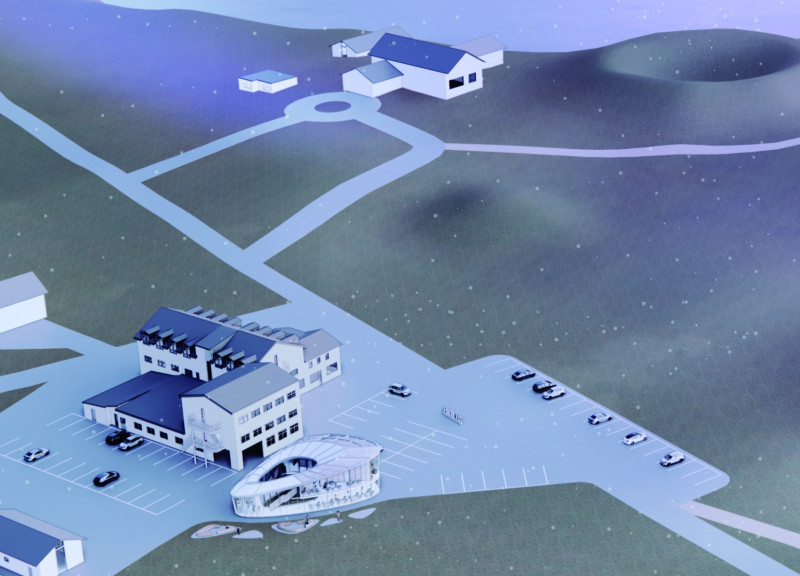5 key facts about this project
The project is located in an urban context where the juxtaposition of contemporary architecture against historical settings prompted a design that is respectful yet innovative. The primary function of the building is to house a community center, which will host various activities ranging from workshops to social gatherings, ensuring accessibility for all age groups. This multifunctionality is a key aspect of the design, promoting engagement within the community.
Upon entry, one is immediately struck by the careful distribution of space. The layout is open yet segmented, providing both communal areas and more private nooks for smaller gatherings. Such design reflects an understanding of the social dynamics within community settings, encouraging interaction while also allowing for personal space when needed. The integration of large windows serves a dual purpose: maximizing natural light and establishing a visual connection with the outside landscape, thereby enhancing the user experience.
In terms of materiality, the project employs a range of thoughtfully selected materials that not only contribute to the building’s visual language but also to its sustainability. The primary materials used include locally sourced timber, which provides warmth and texture, as well as durable concrete that ensures structural integrity. The use of glass elements throughout the façade reinforces transparency and openness, inviting the natural surroundings into the interior spaces. This balance of materials showcases a commitment to both aesthetic appeal and environmental responsibility, promoting a sustainable architectural approach.
The design also incorporates green roofs and vertical gardens, which not only improve insulation but contribute to biodiversity in the urban landscape. This innovative approach highlights a continued dialogue between architecture and nature, allowing the building to breathe and adapt to changing weather conditions while promoting urban ecology. These elements are particularly unique, as they challenge conventional aesthetics and introduce a layer of ecological responsibility to urban architecture.
Further analysis of the project's architectural details reveals a keen attention to scale and proportion. The sleek lines and minimalist forms reflect contemporary design principles while remaining contextually relevant. The roofline’s subtle variations create visual interest and encourage natural drainage, showcasing thoughtful engineering alongside aesthetic pursuits.
Lighting is another crucial aspect of this design. By using a combination of natural light and well-planned artificial illumination, the spaces evoke a sense of warmth and comfort. This is particularly important for a community center where welcoming atmospheres foster social interaction and engagement.
The architectural ideas present in this project resonate beyond mere function; they invite discourse around community and connectivity. The space is designed not only to serve the practical needs of its users but also to foster relationships among individuals, thereby enhancing community cohesion. This forward-thinking approach is essential in today's urban environments, where shared spaces are increasingly vital in shaping social networks.
As one explores the nuances of this architectural design, deeper insights can be gained by reviewing the architectural plans, architectural sections, and other architectural designs related to the project presentation. Such documents elucidate the comprehensive thought process that underpins the project, allowing for a greater appreciation of its conceptual intentions and practical applications. This is a project that exemplifies a commitment to thoughtful design and community enhancement, encouraging continued exploration of its architectural ideals and the impact they may have on urban living.


























